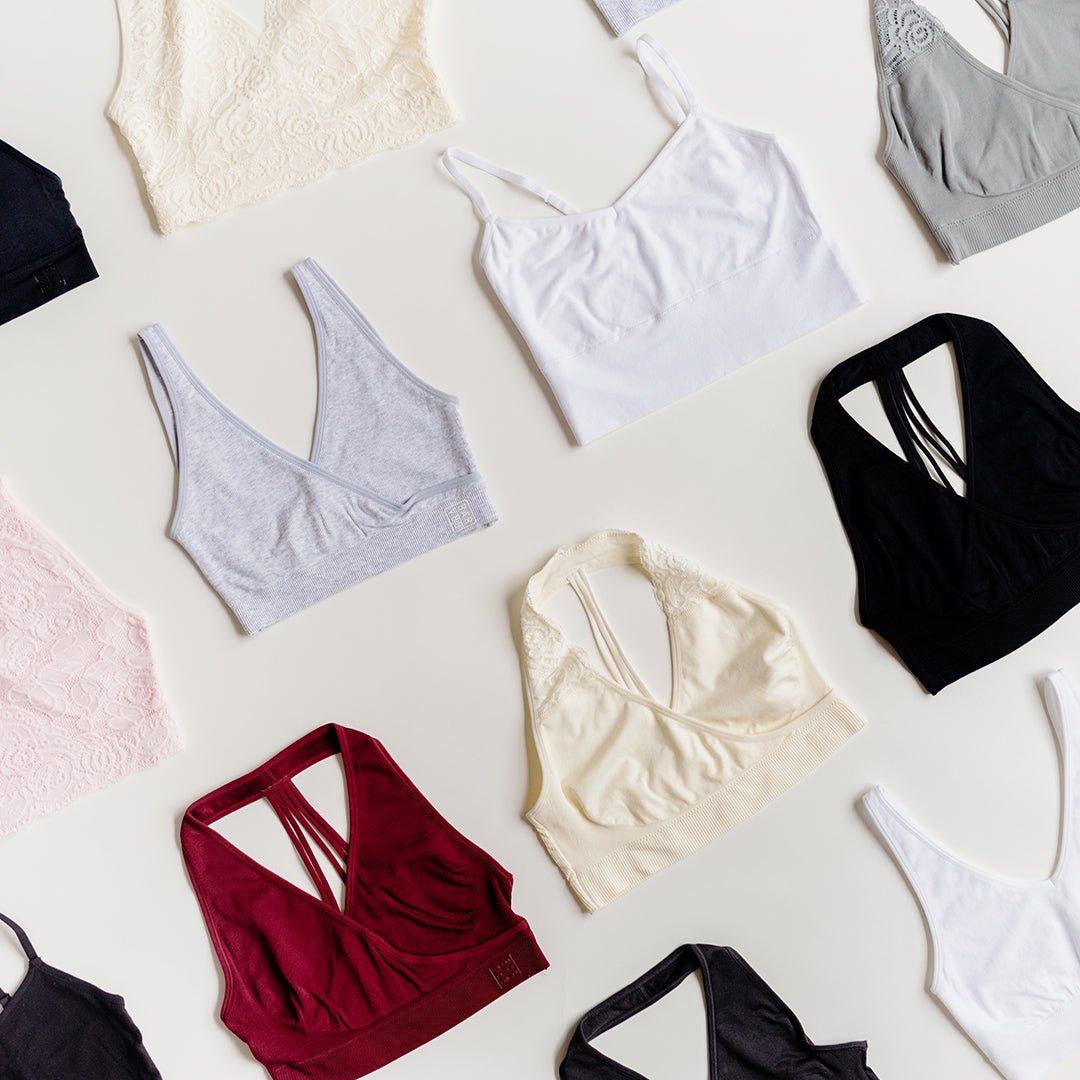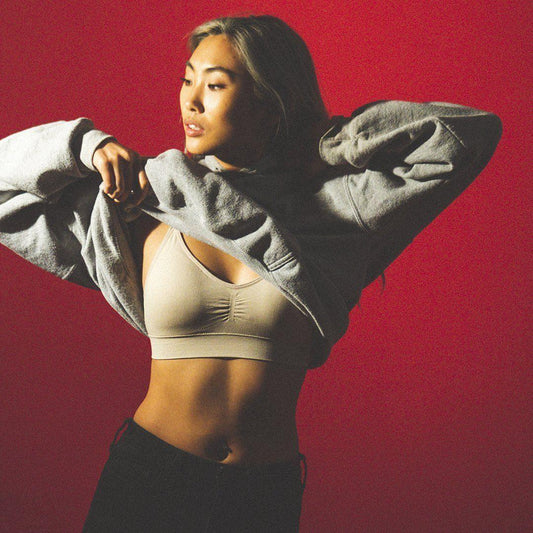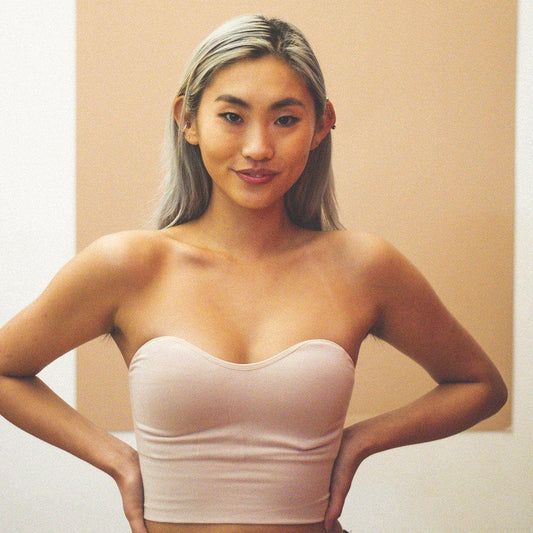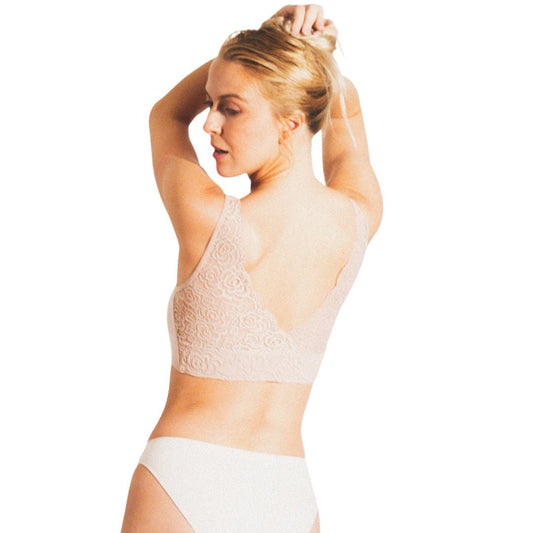
The Ultimate Guide to Measuring Your Cup Size: Decoding the Mystery of Bra Fitting
In this comprehensive guide, we will walk you through the process of measuring your cup size accurately, ensuring that you find the holy grail of bras that not only fit flawlessly but also enhance your natural curves. We'll debunk common misconceptions and provide you with practical tips and techniques to get your cup size right every time.
Whether you're new to bra fitting or have been wearing the wrong size for years, our step-by-step instructions and expert advice will empower you to take control and find the perfect fit. Stop compromising on comfort and confidence, and say goodbye to discomfort, sagging, and awkwardly sized bras.
Get ready to revolutionize your lingerie collection and experience the transformational power of a well-fitted bra. It's time to decode the mystery of bra fitting and embrace your perfect cup size.
Finding the right bra size is crucial for both comfort and overall well-being. Wearing the wrong size can lead to a range of issues, including back pain, shoulder pain, and poor posture. Additionally, an ill-fitting bra can affect the way your clothes fit, making you feel self-conscious and less confident.
To find the perfect bra size, you need to understand two key measurements: the band size and the cup size. These measurements work together to create a well-supported and flattering silhouette. In the following sections, we will delve into each measurement and guide you through the process of finding your ideal fit.
Before we dive into the nitty-gritty of measuring your cup size, let's first understand the basics of cup sizes and band sizes. Cup sizes are denoted by letters (A, B, C, etc.) and represent the volume of the breasts, while band sizes represent the circumference of the ribcage just below the bust.
It's important to note that cup sizes are not absolute and can vary depending on the band size. For example, a 34B and a 36A may have the same cup volume, but the band size differs. Therefore, when determining your cup size, you must consider both the band size and the cup size to find the perfect fit.
There are numerous misconceptions out there when it comes to bra sizing. One common misconception is that the band size is the most important factor. While the band size provides support, the cup size is equally important in achieving a comfortable and flattering fit.
Another misconception is that small-breasted individuals can only wear certain cup sizes, or that larger cup sizes are only for those with fuller busts. In reality, cup sizes are available in a wide range, allowing women of all shapes and sizes to find their perfect fit.
Now that we have debunked some of the misconceptions, let's move on to the crucial step of measuring your cup size accurately. To get started, you will need a flexible measuring tape and a mirror. It's best to measure yourself while wearing an unpadded bra or no bra at all for the most accurate results.
- Band Size Measurement: Start by wrapping the measuring tape snugly around your ribcage, just below your bust. Ensure that the tape is parallel to the ground and not twisted. Take note of the measurement in inches. This measurement will determine your band size.
- Cup Size Measurement: To measure your cup size, wrap the tape around the fullest part of your bust, making sure it is parallel to the ground. Again, take note of the measurement in inches.
- Calculating Your Cup Size: To calculate your cup size, subtract your band size measurement from your cup size measurement. Each inch represents a cup size, with 1 inch being an A cup, 2 inches a B cup, and so on. For example, if your band size is 34 inches and your cup size is 36 inches, the difference is 2 inches, indicating a B cup.
Remember, this is just a starting point. You may need to try on different sizes to find the one that fits you best.
Now that you have your measurements, it's time to put them to good use and find the perfect bra. Here are some tips and tricks to ensure a proper bra fitting:
- Try on Different Sizes: Don't be afraid to try on different sizes, even if you think you know your measurements. Bra sizing can vary between brands and styles, so it's important to experiment and find what works best for you.
- Pay Attention to the Band: The band should fit snugly around your ribcage without digging in or riding up. It should provide support without causing discomfort. If the band feels too tight or too loose, try adjusting the size accordingly.
- Check the Cup Coverage: The cups should fully encase your breasts without any spillage or gaps. If you notice spillage or gaps, try a different cup size or style to ensure a proper fit.
- Assess the Straps: The straps should provide support without digging into your shoulders. Adjust the straps to ensure a comfortable fit without excessive tightness.
- Move Around: Don't just stand still when trying on a bra. Move around, raise your arms, and bend over to see if the bra stays in place and provides the desired support.
Remember, bra fitting is a personal journey, and what works for one person may not work for another. Trust your instincts and focus on finding a bra that makes you feel comfortable and confident.
In addition to finding the right size, it's essential to consider your body shape when choosing a bra style. Different bra styles are designed to enhance and flatter specific body types. Here are some common body shapes and the recommended bra styles:
- Pear Shape: If you have a smaller bust and wider hips, opt for bras with padded cups or push-up styles to create balance and enhance your bust.
- Apple Shape: If you carry weight around your midsection, look for bras with side support and full coverage to create a slimming effect and provide additional support.
- Hourglass Shape: If you have a well-defined waist and balanced bust and hips, most bra styles will work well for you. Experiment with different styles to find what makes you feel most comfortable and confident.
- Athletic Shape: If you have a more muscular build with a smaller bust, consider bras with padding or push-up styles to add volume and enhance your curves.
Remember, these recommendations are just a starting point. It's important to try on different styles and see what works best for your individual shape and preferences.
Knowing the signs of an ill-fitting bra is essential to ensure you're wearing the right size. Here are some common signs that your bra doesn't fit correctly:
- Straps Digging In: If the straps are leaving red marks or digging into your shoulders, it's a sign that your bra is not providing adequate support.
- Bulging or Spillage: If your breasts are spilling over the top or sides of the cups, it means the cup size is too small.
- Loose Band: If the band rides up or feels loose, it's a sign that you need a smaller band size or a tighter hook setting.
- Gaping Cups: If there are gaps between your breasts and the cups, it indicates that the cup size is too large.
- Back Pain: Wearing the wrong bra size can lead to back pain or discomfort. If you experience any pain, it's worth reassessing your size and fit.
Remember, these signs may vary depending on your individual body shape and preferences. Trust your instincts and prioritize comfort when choosing a bra.
Wearing the wrong bra size can have a significant impact on your comfort, confidence, and overall well-being. Here are some of the consequences of wearing an ill-fitting bra:
- Discomfort: An ill-fitting bra can cause discomfort, including digging straps, underwire poking, and band riding up, leading to physical discomfort throughout the day.
- Poor Posture: Wearing a bra that doesn't provide adequate support can affect your posture, leading to slouching and back pain.
- Lack of Confidence: Wearing a bra that doesn't fit correctly can make you feel self-conscious and less confident. A well-fitted bra, on the other hand, can enhance your natural curves and boost your confidence.
- Premature Sagging: Wearing a bra that doesn't provide proper support can contribute to premature sagging of the breasts over time.
Investing time in finding the right bra size is crucial for your overall comfort, support, and confidence. Don't underestimate the impact of a well-fitted bra on your day-to-day life.
Congratulations! You've made it to the end of our ultimate guide to measuring your cup size and decoding the mystery of bra fitting. Armed with the knowledge and techniques shared in this guide, you're now equipped to find the perfect bra that fits you flawlessly.
Remember, bra fitting is a personal journey, and it may take some trial and error to find your ideal size and style. Be patient with yourself, and don't be afraid to seek assistance from professionals if needed.
Lastly, always prioritize your comfort and confidence when choosing a bra. Trust your instincts and embrace your perfect cup size. Say goodbye to discomfort, sagging, and awkwardly sized bras, and embark on a new era of comfort and support.
Happy bra fitting!




